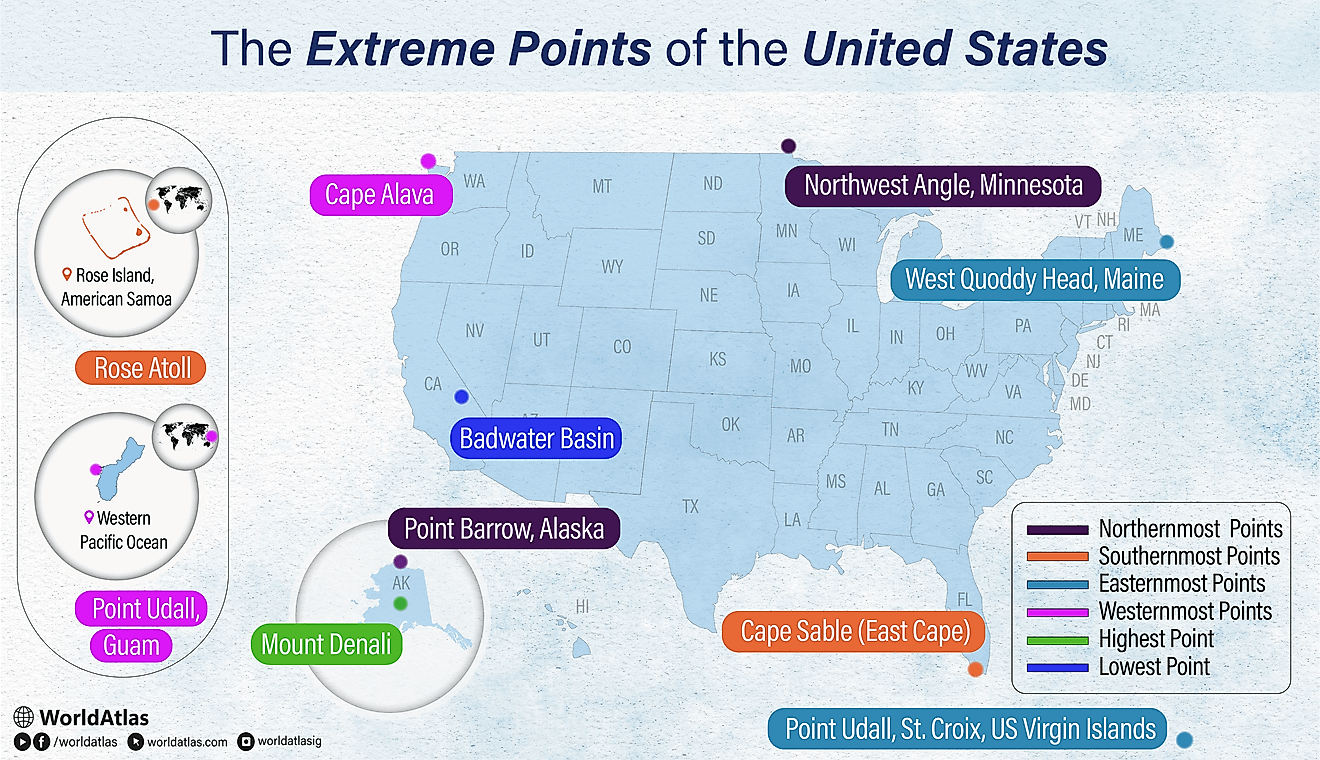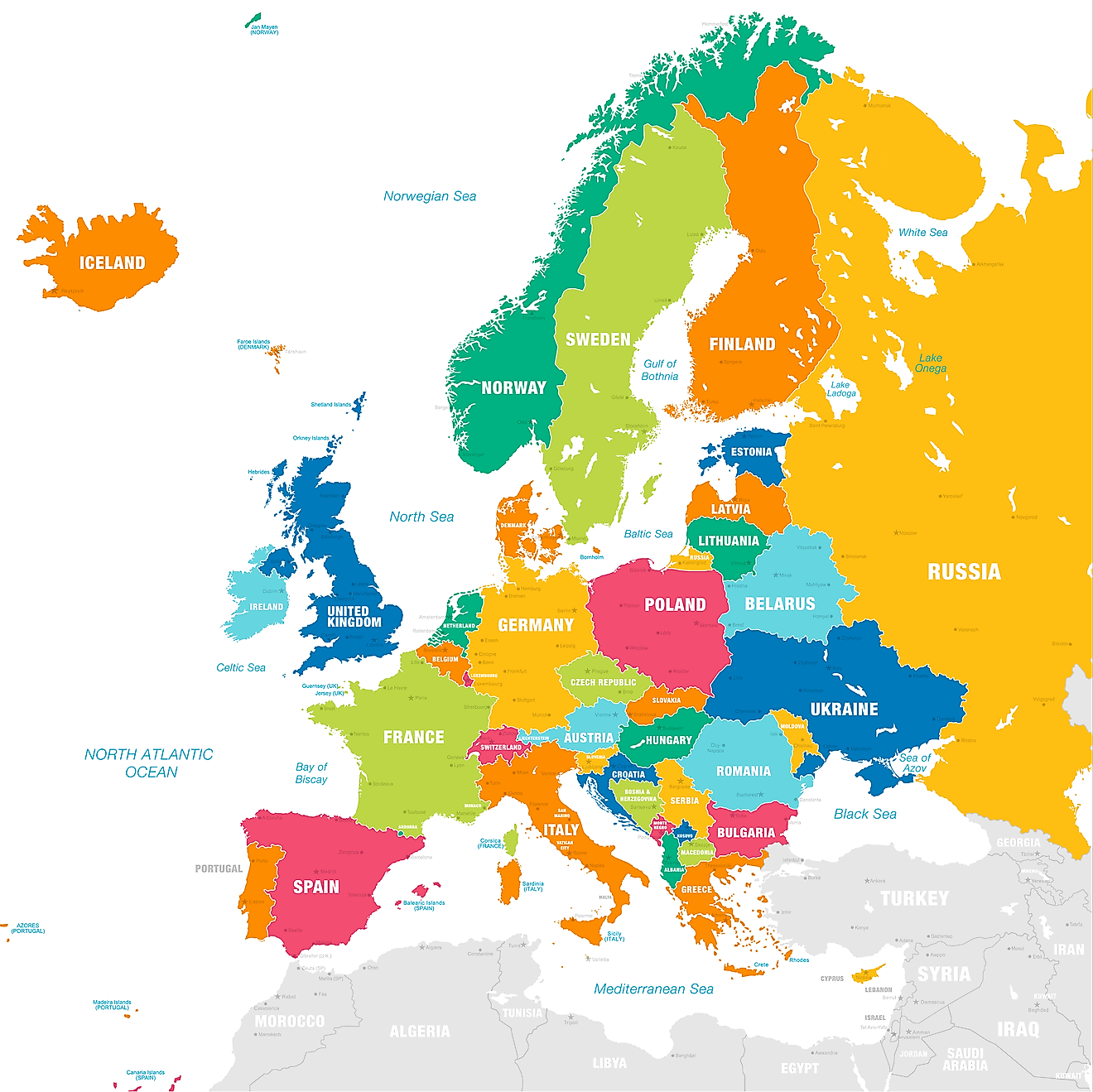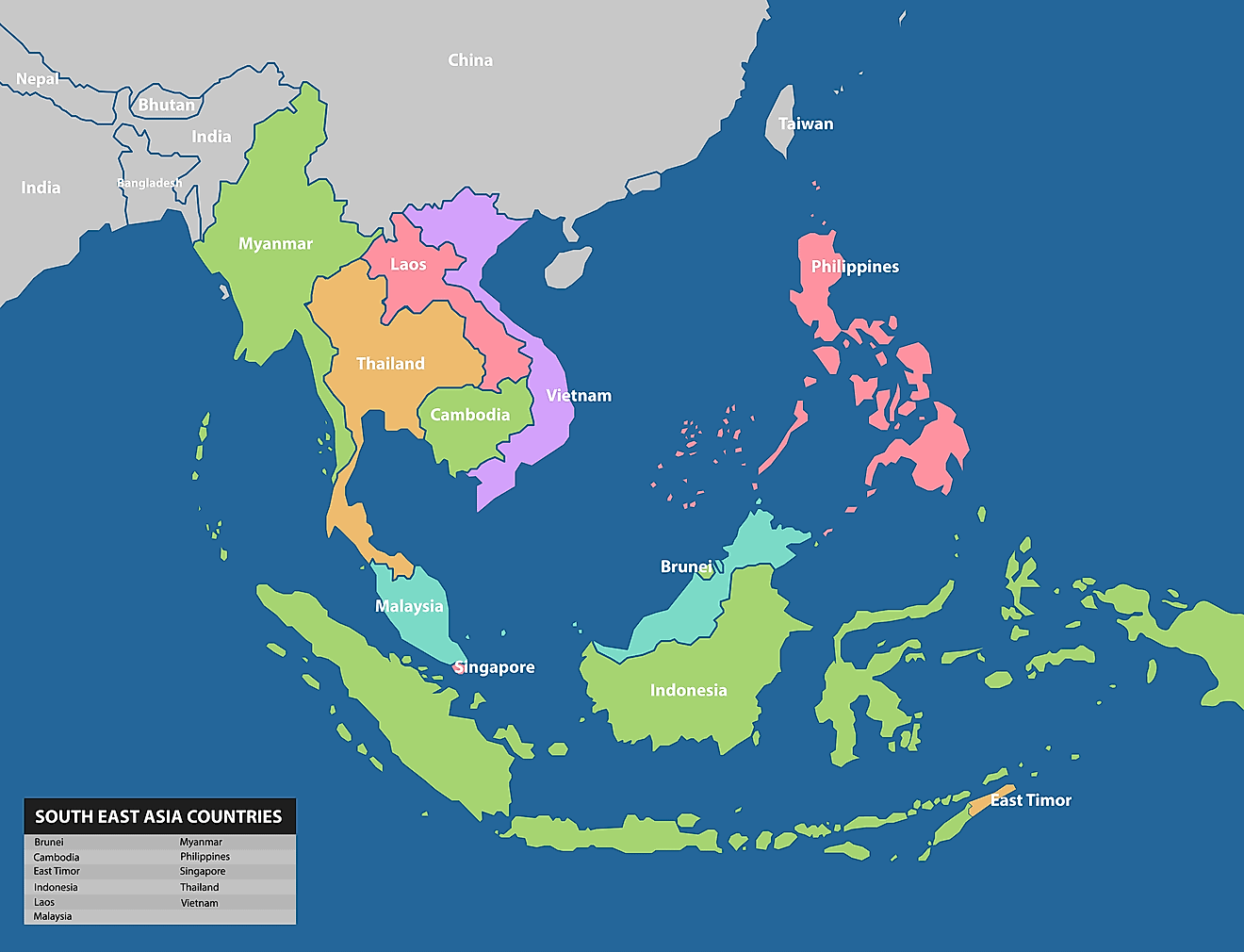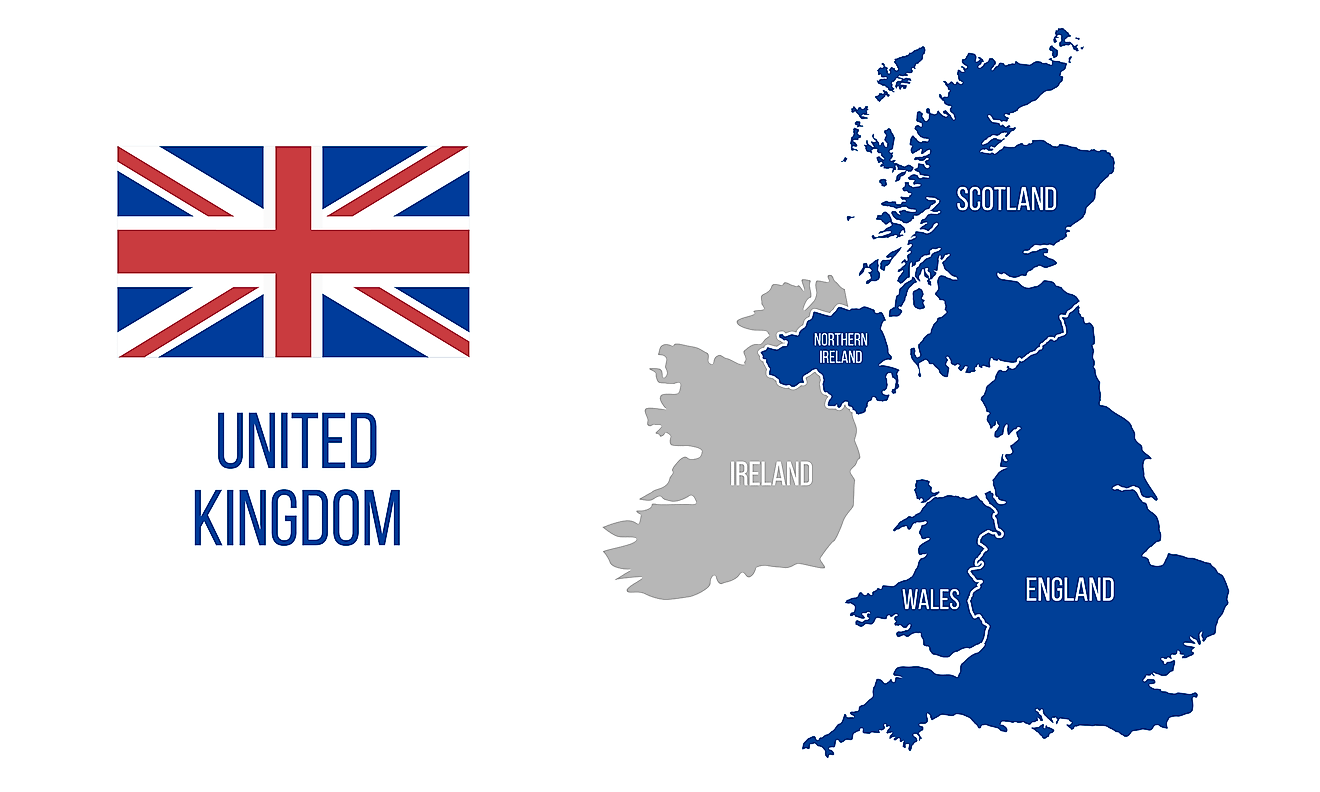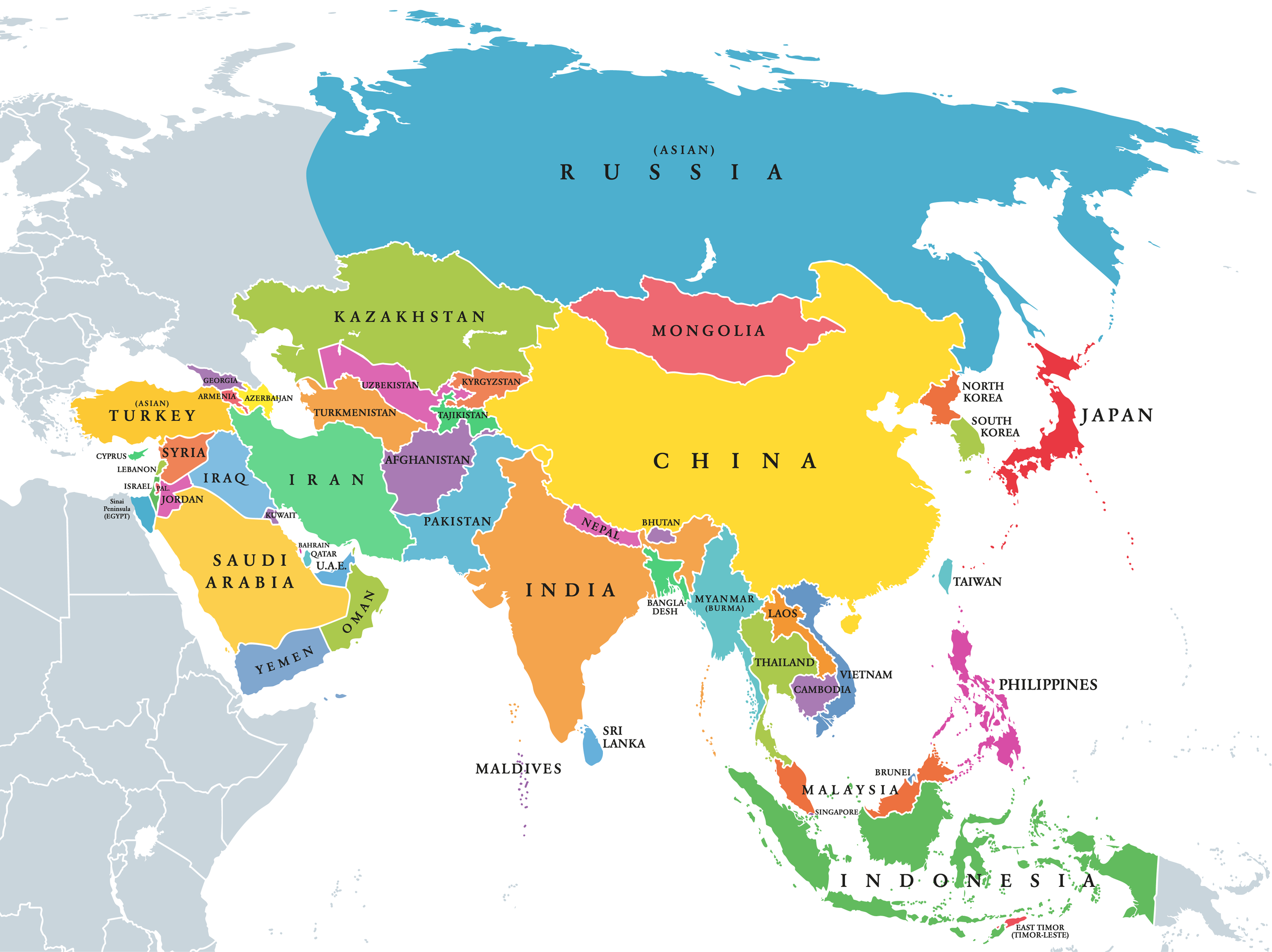
How Many Countries Are There In Asia?
- China is the most populous country in both Asia and the world.
- India is set to overtake China as the most populous country in the world by 2027.
- The Sultanate of Brunei is Asia's least populated country.
- Asia consists of 48 countries and 3 other territories.
- Asia is the most populous continent in the world.
Asia is the biggest and most populous continent in the world. The continent is made up of 48 countries and three other territories. The count includes transcontinental countres with majority of their population located in Asia. Thus, Russia that has about 75% of its territory in Asia but only around 22% of its population residing in this part, has been left out of the list. If Russia is included, the number of countries in Asia becomes 49.
The United Nations divides Asia into five different subregions for statistical purposes. These subregions and the countries included in them have been described below:
Eastern Asia
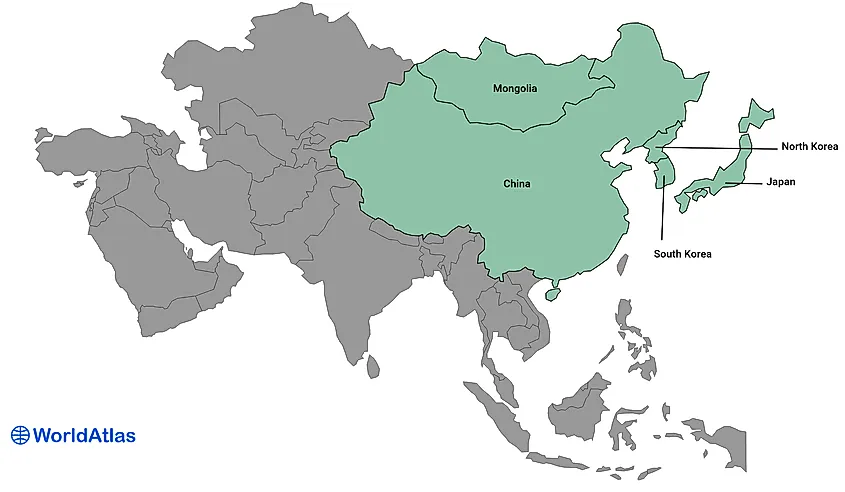
- China
- Japan
- Mongolia
- North Korea
- South Korea
The sub-region of Eastern Asia is home to roughly 1.65 billion people, and includes countries such as China, which is the most populous country in the world with a population of over 1.41 billion. Mongolia is among the least populous sovereign states in the region, with about 3.5 million people. The economies of China and Japan rank second and third globally by nominal GDP. China is expected to become the world’s largest economy, potentially surpassing the United States in the coming years. Eastern Asia also includes North Korea, one of the most isolated states in the world, which maintains a communist system and faces significant economic and humanitarian challenges. Many of its neighbours, particularly Japan and the Republic of Korea (South Korea), watch its nuclear-weapons programme with concern. The region’s largest metropolitan area is Tokyo, whose greater urban area houses around 37 million people, followed by the Chinese cities of Shanghai (30 million) and Beijing (22.6 million).
South-Eastern Asia
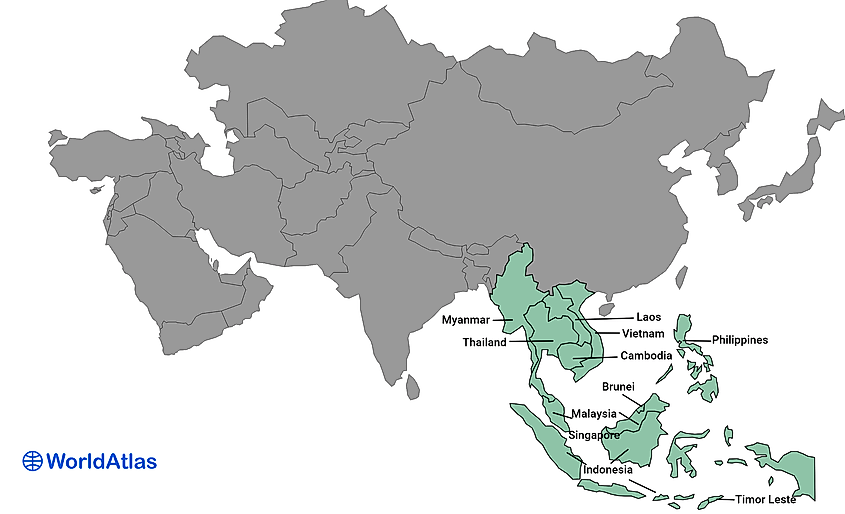
- Brunei
- Cambodia
- Indonesia
- Laos
- Malaysia
- Myanmar
- Philippines
- Singapore
- Thailand
- Timor Leste
- Vietnam
Southeast Asia comprises 11 countries and is home to an estimated 700 million people. Its largest and most populous nation is Indonesia, an archipelago of thousands of islands, whose population exceeds 273 million. The region’s least populous country is the Sultanate of Brunei, with roughly 462,000 residents. Among its major cities, Jakarta (Indonesia) and Bangkok (Thailand) figure prominently; while Metro Manila (Philippines) is also among the region’s largest urban areas.
Southern Asia

- Afghanistan
- Bangladesh
- Bhutan
- India
- Iran
- Maldives
- Nepal
- Pakistan
- Sri Lanka
Southern Asia is the most populous subregion of Asia, with a population exceeding 2 billion people. It comprises nine countries, of which more than half the population lives in India, whose population is around 1.45 billion, making it the world’s second-most populous country. Some demographic forecasts indicate that India may surpass China in population by the late 2020s. The next most populous country in the subregion is Pakistan, with over 220 million people. The least populous is the island nation of the Maldives, with just over 500,000 residents. Among the region’s largest urban areas, Mumbai (India) houses roughly 22 million people; Dhaka (Bangladesh) and Karachi (Pakistan) also exceed 18 million and 20 million, respectively.
Central Asia
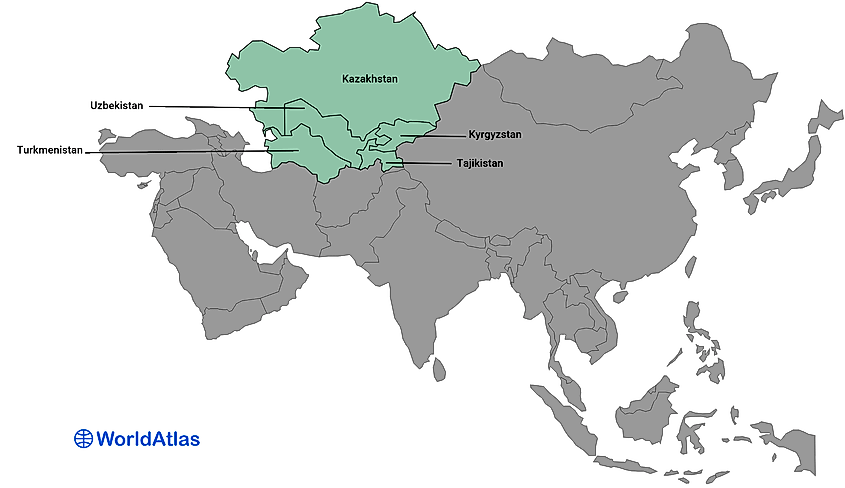
- Kazakhstan
- Kyrgyzstan
- Tajikistan
- Turkmenistan
- Uzbekistan
Central Asia comprises five countries—Kazakhstan, Kyrgyzstan, Tajikistan, Turkmenistan, and Uzbekistan—and has an estimated population of about 83.6 million as of 2025. All five were republics of the Soviet Union until its dissolution in 1991. The most populous country in the region is Uzbekistan, with over 37 million people. The least populous is Turkmenistan, with around 7.6 million residents. The region’s largest country by land area is Kazakhstan, which is transcontinental, spanning Asia and Europe, though the majority of its population lives in its Asian portion. The most populous city in the region is Tashkent, the capital of Uzbekistan, with a population of about 3 million.
Western Asia

- Armenia
- Azerbaijan
- Bahrain
- Cyprus
- Georgia
- Iraq
- Israel
- Jordan
- Kuwait
- Lebanon
- Oman
- Qatar
- Saudi Arabia
- State of Palestine
- Syria
- Turkey
- United Arab Emirates
- Yemen
Western Asia has a population of roughly 280 million people, according to recent United Nations demographic estimates. The most populous country in the subregion is Turkey, with more than 84 million inhabitants. Turkey is also transcontinental, as a small portion of its land lies in southeastern Europe—home to Istanbul, its largest city. Other transcontinental countries in Western Asia include Georgia and Azerbaijan, though the majority of their populations live on the Asian side of the Caucasus. The least populous country in the subregion is Cyprus, with just over 1.2 million residents. Although geographically in Asia, Cyprus is generally considered a European country in political and economic terms and is a member of the European Union. The most populous city in Western Asia is Baghdad, the capital of Iraq, with around 8.7 million residents. Other major population centers include Riyadh, the capital of Saudi Arabia, and Ankara, the capital of Turkey.
Asian Territories
- Taiwan
- Hong Kong
- Macau
In addition to Asia’s 48 countries, the continent also includes three other territories. Two of them, Hong Kong and Macau, are Special Administrative Regions of the People’s Republic of China. Both territories were originally part of China, but were taken by European powers in centuries past. Hong Kong was a British colony, but was ceded back to China in 1997. Macau was a Portuguese colony until 1999, when it too was returned to Chinese control. The third Asian territory is the island of Taiwan, which is now a de facto independent state. Most countries, however, do not recognize Taiwan as an independent country, and instead consider it a province of China. China itself considers the island a renegade province that must eventually be put under its rule, and has threatened to use force to take control of the island.
Transcontinental Countries
The list of countries in Asia includes 6 transcontinental countries. These are Kazakhstan, Georgia, Armenia, Cyprus, Azerbaijan, and Turkey. These countries have spread across both Europe and Asia. However, the majority of the population of these countries reside in the Asian part of their territories unlike that of Russia. Hence, these countries have been listed here.
How Many Countries Are There in Asia?
| Rank | Country | Subregion | Population |
|---|---|---|---|
| 1 | Afghanistan | Southern Asia | 42,647,492 |
| 2 | Armenia | Western Asia | 3,033,500 |
| 3 | Azerbaijan | Western Asia | 10,202,850 |
| 4 | Bahrain | Western Asia | 1,588,670 |
| 5 | Bangladesh | Southern Asia | 173,562,364 |
| 6 | Bhutan | Southern Asia | 791,524 |
| 7 | Brunei | South-Eastern Asia | 462,720 |
| 8 | Cambodia | South-Eastern Asia | 17,638,801 |
| 9 | China | Eastern Asia | 1,408,975,000 |
| 10 | Cyprus | Western Asia | 1,358,282 |
| 11 | Georgia | Western Asia | 3,673,850 |
| 12 | India | Southern Asia | 1,450,935,791 |
| 13 | Indonesia | South-Eastern Asia | 283,487,931 |
| 14 | Iran | Southern Asia | 91,567,740 |
| 15 | Iraq | Western Asia | 46,042,015 |
| 16 | Israel | Western Asia | 9,974,400 |
| 17 | Japan | Eastern Asia | 123,975,371 |
| 18 | Jordan | Western Asia | 11,552,876 |
| 19 | Kazakhstan | Central Asia | 20,592,571 |
| 20 | Kuwait | Western Asia | 4,973,861 |
| 21 | Kyrgyzstan | Central Asia | 7,224,610 |
| 22 | Laos | South-Eastern Asia | 7,769,820 |
| 23 | Lebanon | Western Asia | 5,805,962 |
| 24 | Malaysia | South-Eastern Asia | 35,557,673 |
| 25 | Maldives | Southern Asia | 527,799 |
| 26 | Mongolia | Eastern Asia | 3,524,788 |
| 27 | Myanmar | South-Eastern Asia | 54,500,091 |
| 28 | Nepal | Southern Asia | 29,651,054 |
| 29 | North Korea | Eastern Asia | 26,498,820 |
| 30 | Oman | Western Asia | 5,281,538 |
| 31 | Pakistan | Southern Asia | 251,269,164 |
| 32 | Philippines | South-Eastern Asia | 115,843,670 |
| 33 | Qatar | Western Asia | 2,857,822 |
| 34 | Saudi Arabia | Western Asia | 35,300,280 |
| 35 | Singapore | South-Eastern Asia | 6,036,860 |
| 36 | South Korea | Eastern Asia | 51,751,070 |
| 37 | Sri Lanka | Southern Asia | 21,916,000 |
| 38 | State of Palestine | Western Asia | 5,289,150 |
| 39 | Syria | Western Asia | 24,672,760 |
| 40 | Tajikistan | Central Asia | 10,590,927 |
| 41 | Thailand | South-Eastern Asia | 71,668,011 |
| 42 | Timor-Leste | South-Eastern Asia | 1,400,638 |
| 43 | Turkey | Western Asia | 85,518,660 |
| 44 | Turkmenistan | Central Asia | 7,494,498 |
| 45 | United Arab Emirates | Western Asia | 10,876,981 |
| 46 | Uzbekistan | Central Asia | 36,361,859 |
| 47 | Vietnam | South-Eastern Asia | 100,987,692 |
| 48 | Yemen | Western Asia | 40,583,160 |
